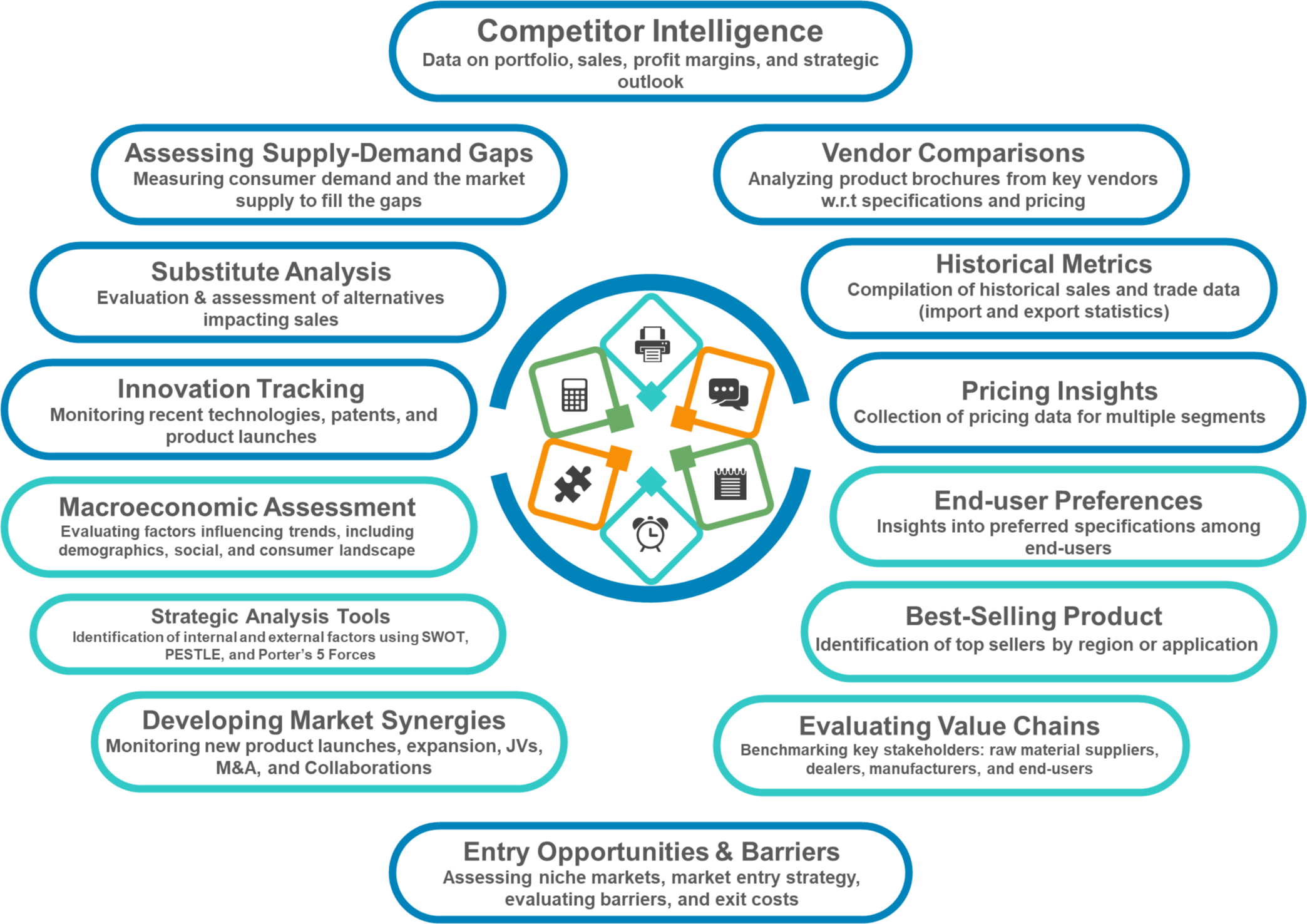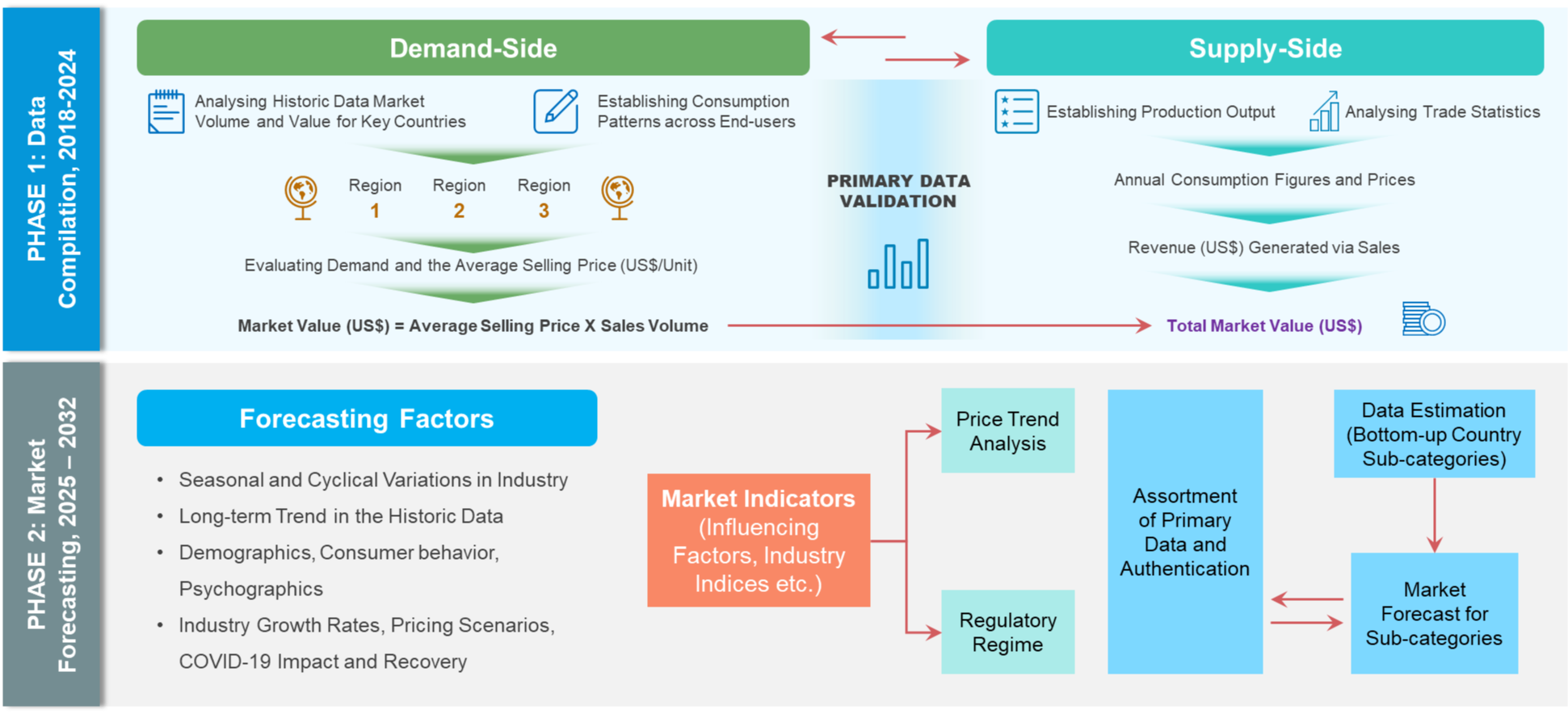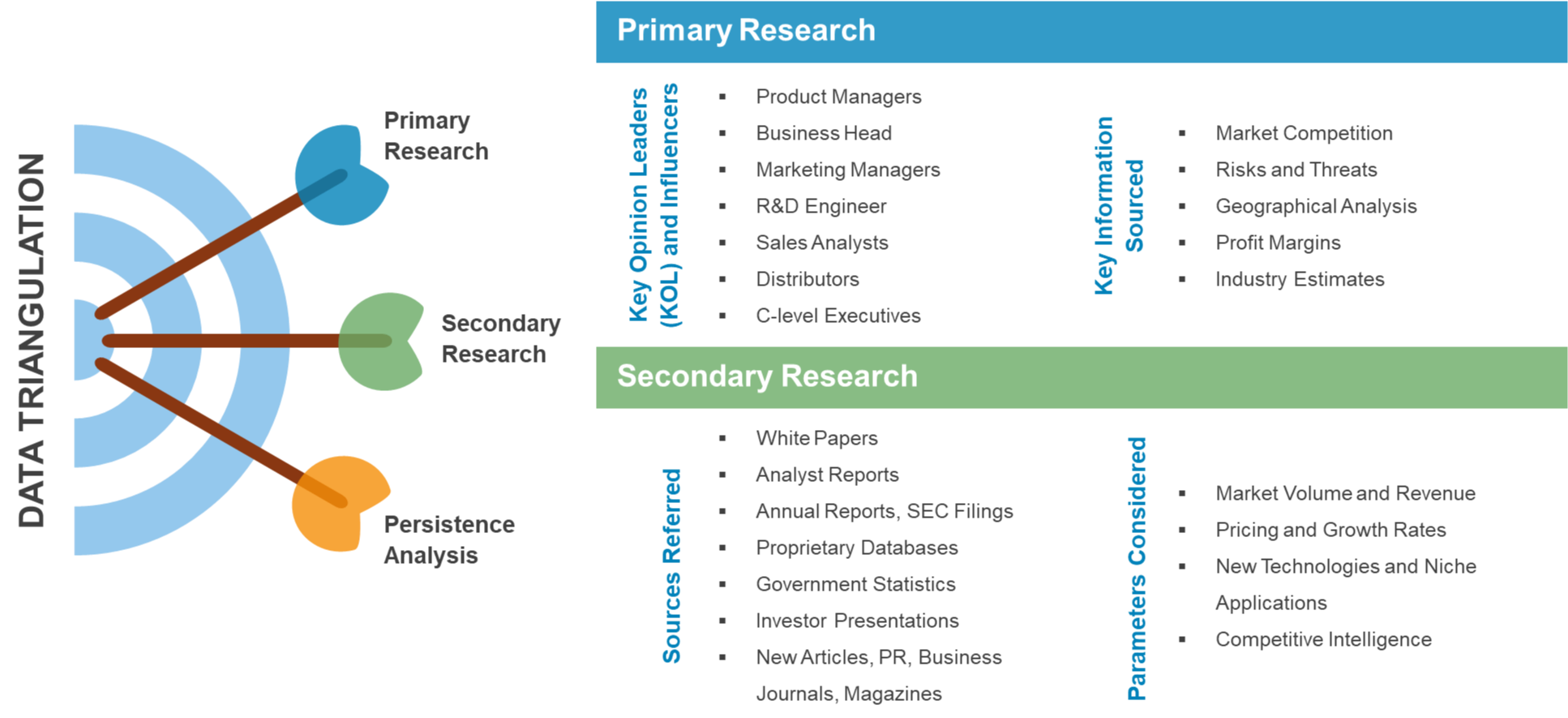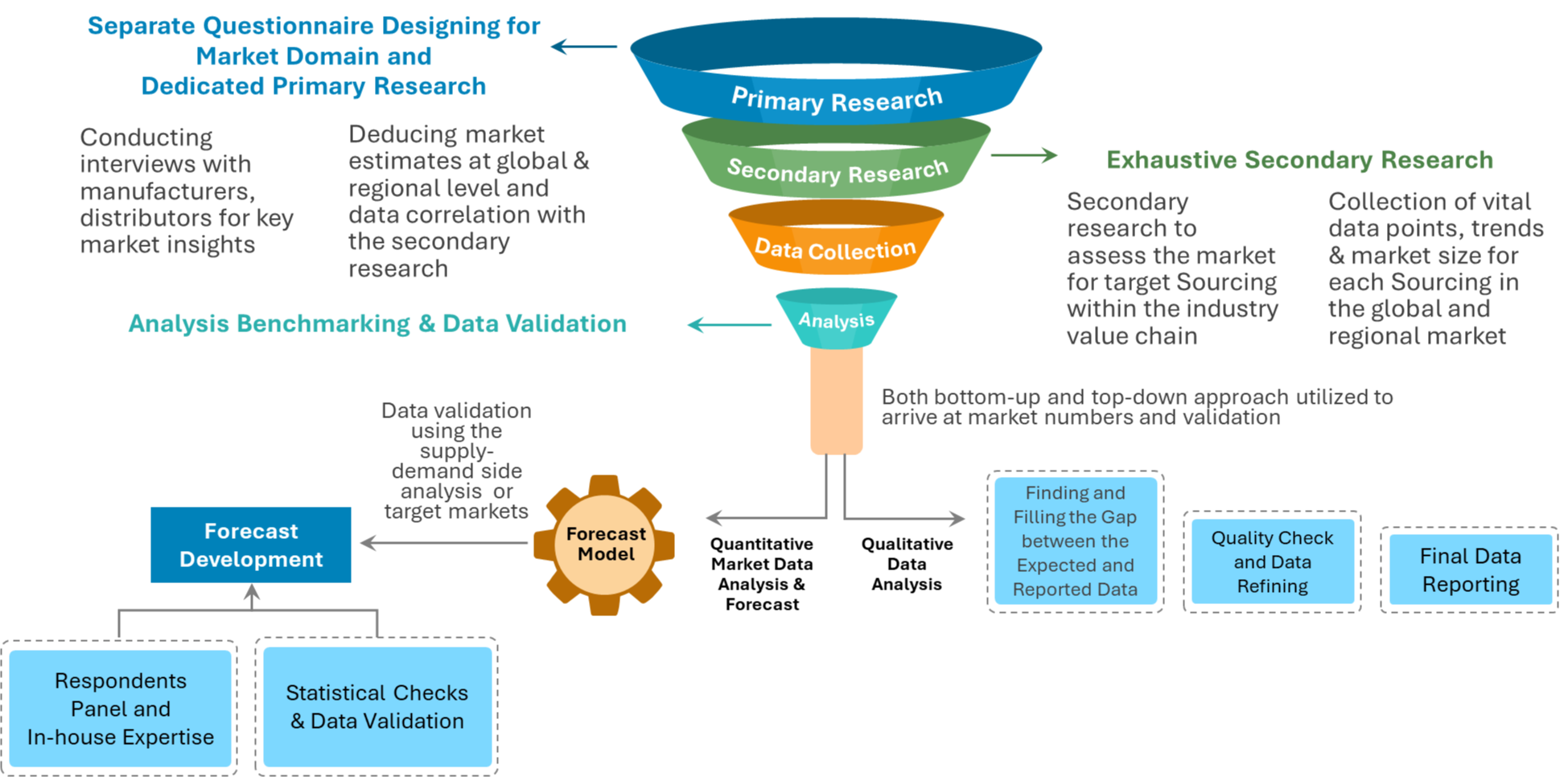Research Methodology Framework for Market Research Excellence
At Persistence Market Research, we implement a comprehensive, validated, and multi-dimensional approach to market analysis that delivers actionable insights across complex market landscapes. Our methodology combines the analytical rigor of leading consulting firms with innovative research techniques, ensuring robust market assessments that guide strategic decision-making with confidence.
Core Research Philosophy
Our methodology is built on four foundational pillars:

At Persistence Market Research, our methodology is designed to transcend conventional market studies by combining analytical rigor, multi-source validation, and future-focused insights.
We integrate advanced research frameworks, robust data collection strategies, cutting-edge analytics, and innovative technologies to deliver a 360-degree view of complex markets.
Each stage spanning from strategic scoping and hypothesis-building to competitive intelligence, quality validation, and actionable recommendations is engineered to provide clients with unmatched clarity, precision, and confidence in decision-making.
By embedding innovation and technology at the core, our approach ensures that insights are not only comprehensive but also predictive, empowering businesses to seize opportunities, mitigate risks, and achieve sustainable growth.

Capturing Key Information and Events
During this phase, key research objectives focus on essential information and data points for assessing the market, including:

TAM-SAM-SOM Framework Implementation
We employ both top-down and bottom-up approaches to ensure accurate market sizing.
Top-Down Market Sizing
- Universe Definition: Total global/regional market identification
- Segmentation Filters: Geographic, demographic, and behavioral constraints
- Market Share Analysis: Competitive landscape assessment and share allocation
- Growth Rate Application: Historical trends and forward-looking growth assumptions
Bottom-Up Market Sizing
- Unit Economics: Average transaction values, purchase frequencies, customer lifecycle
- Customer Segmentation: Detailed buyer persona development and sizing
- Penetration Analysis: Market penetration rates by segment and geography
- Scaling Methodology: Extrapolation techniques with confidence intervals
Validation & Cross-Verification
- Triangulation: Comparing top-down and bottom-up results for consistency
- Sensitivity Analysis: Testing key assumptions and parameter variations
- Peer Benchmarking: Comparison with analogous markets and industry benchmarks
- Expert Review: External validation through industry specialist consultation

Forecasting & Projection Modeling
Our proprietary forecasting models incorporate multiple variables and scenarios.
Forecasting Components
- Historical Trend Analysis: 10-year historical growth patterns and cyclical variations
- Driver-Based Modeling: Economic indicators, demographic shifts, technology adoption
- Scenario Planning: Base case, optimistic, and conservative projections
- Monte Carlo Simulations: Probability-weighted outcomes and risk assessments
Model Validation
- Back-Testing: Historical accuracy assessment over 3–5-year periods
- Cross-Validation: Multiple modeling approaches for result comparison
- External Benchmarking: Comparison with established market forecasts
- Continuous Calibration: Quarterly model updates based on new data
Comprehensive Data Collection Strategy
Our secondary research phase establishes a robust knowledge base utilizing diverse, credible sources.
Secondary Data Sources
- Industry Publications & Reports
- Government & Regulatory Data
- Financial Intelligence (filings & reports)
- Academic Research & Digital Intelligence
Quality Assurance Protocol
- Source credibility assessment and publication date validation
- Data consistency checks across multiple sources
- Bias identification and neutralization techniques
- Information gap tracking for primary research prioritization

Primary Research Excellence
Our primary research methodology employs best-in-class techniques to capture unique market insights.
Quantitative Research Methods
- Large-Scale Surveys: Statistically representative samples with 95% confidence intervals
- Survey Methodology: Multi-channel deployment (online, telephone, in-person)
- Question Architecture and Response Optimization
Qualitative Research Methods
- Executive Interviews
- Focus Groups
- Expert Consultations
Quality Assurance & Validation Framework
Multi-Stage Validation Process
- Source Verification and Consistency Testing
- Outlier Detection and Bias Assessment
- Peer Review Process and External Validation
- Sensitivity Analysis and Confidence Intervals

Methodology Validation & Credibility
Our research methodology has been extensively validated through:
- Academic Partnerships: Collaborations with top-tier business schools and research institutions
- Client Success Stories: Documented case studies demonstrating research impact and ROI
- Continuous Benchmarking: Performance comparison with leading global research firms
This comprehensive methodology framework positions Persistence Market Research at the forefront of market intelligence, combining the analytical sophistication of top-tier consulting firms with innovative research techniques. Our approach ensures that every market assessment delivers precise, actionable, and strategically valuable insights that drive business success in competitive market environments.
Ready to unlock your market potential? Contact our research experts to discuss how our validated methodology can transform your strategic decision-making with data-driven market intelligence.
Ready to unlock your market potential?
Contact our research experts to discuss how our validated methodology can transform your strategic decision-making with data-driven market intelligence.
Contact Research Experts